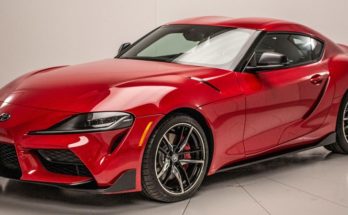While Henry Ford is often credited with the first use of mass production, it was technically Oldsmobile’s founder, Ransom E Olds, who gets to claim that distinction. Ford was the first to utilize a moving assembly line, but Oldsmobiles were part of the mass market since 1901. Perhaps the most well-known early Oldsmobile model was the 1910 Limited Touring make, which has become a part of art history, as painted by William Hardner Foster in Setting the Pace to commemorate the vehicle’s win against the 20th Century Limited train.
In the 1930’s, the Oldsmobile pioneered the use of a semi-automatic transmission, though by the 1940’s they were utilizing a completely automatic transmission. During World War II, production halted as Oldsmobile got involved with war efforts and became a supplier of large-caliber guns and shells. After the war they went back to their pioneering roots and introduced the overhead valve V8 engine, which became an instant success with fans of racing and hot rods. It was quite a bit more powerful than the other engines at the time (which used a flathead, straight eight design), and worked so well that it wasn’t revamped until the 1960’s.
The Oldsmobile suffered a low point in the 1950’s due to style changes across the automotive industry, but hit its stride once again in the 1960’s, with the introduction of the first modern four-wheel drive vehicle and the new turbocharged engine. Oldsmobile began selling muscle cars as well as mid-size cars, coupes, and station wagons. Most notable were the Oldsmobile Cutlass, the Vista Cruiser, and the Tornado, the last of which was the largest front-wheel drive car ever produced when it appeared on the vehicle scene in the late 1960’s, making such a splash that it was named “Car of the Year” in the 1966 edition of Motor Trend.
While the 1970’s and 1980’s were mostly good to Oldsmobile, there were a few hiccups mixed in, such as the PR disaster that occurred when Oldsmobile decided to replace their Rocket engine with a Chrysler design due to demand exceeding output. The V8 engine was soon fading out of style for most regular vehicles, but the lead up was harried and cost Oldsmobile some loyal customers.
Despite Oldsmobile’s track record, it began to fall out of favor in the late 1990’s, and in 2000, their parent company General Motors declared that the Oldsmobile badge would be retired on a phaseout schedule. Despite their last vehicle being a commercial success, Oldsmobile went the way of the dinosaurs in 2004, after the last car rolled off the production line. It was signed by all the workers present and is now residing in Sterling Heights, Michigan at the GM Heritage Center.
With over 100 years of production, Oldsmobile was, until it was shut down, the oldest American vehicle company, as well as one of the oldest vehicle companies globally. Though it has been 14 years, there are still Oldsmobiles being driven down the roads today, and it wouldn’t surprise me if, at some point, someone decided to resurrect this old marque and re-create it for a modern day driver.


